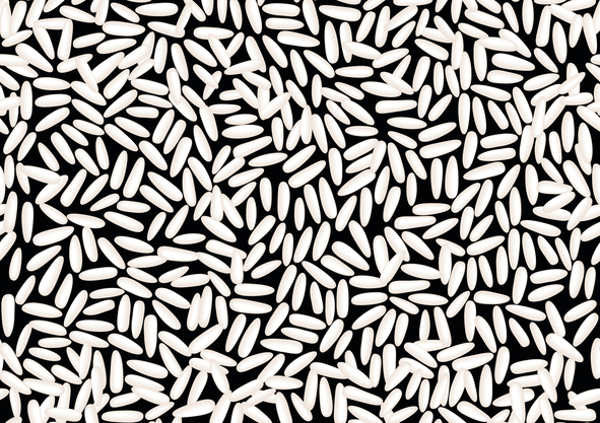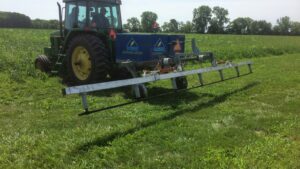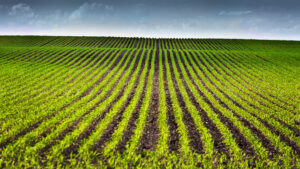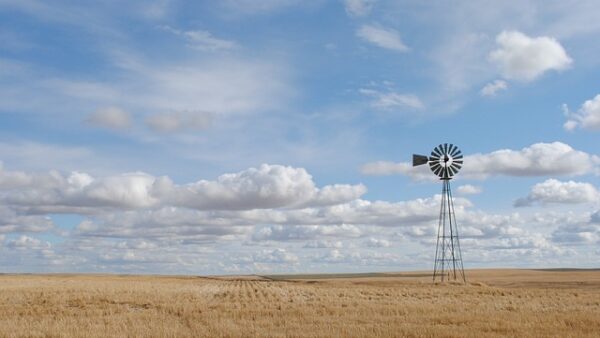STATUS AUSTRALIA
Growers and advisers have access to a new tool that can help them assess the long-term profitability of methods to control brome grass – one of Australia’s most-costly cropping weeds.
The Brome RIM tool is hands-on, user-friendly decision-support software that has been adapted from the well-known RIM (Ryegrass Integrated Management) model for annual ryegrass
The original RIM model, that was developed by the Australian Herbicide Resistance Initiative (AHRI), was modified by CSIRO – with Grains Research and Development Corporation (GRDC) investment as part of the GRDC Stubble Initiative – to include brome grass.
The University of Adelaide and Mallee Sustainable Farming also helped in the development and testing of the new tool.
CSIRO farming systems scientist Rick Llewellyn, who led the development of Brome RIM with colleague Marta Monjardino, said brome grass – comprising two main problem species Bromus diandrus and B. rigidus – was an annual grass weed that was widely distributed across cropping areas of southern Australia.
“It is very competitive against crops and is the major grass weed in many districts, with a lack of herbicide options making it difficult to control in cereals,” he said. “Changes in brome grass populations mean its germination is now often more staggered and occurs later in the season, allowing it to evade early season control.”
Llewellyn said brome grass was becoming an increasing problem in some cropping areas due to a higher intensity of cropping in rotations, reduced tillage and limited effective herbicides for its control in cereals.
Llewellyn said the nature of brome grass meant the use of an integrated weed management (IWM) strategy, combining several tactics to drive down the weed seed bank over several years, was particularly important as there were few individual practices that offered consistent high efficacy.
“The Brome RIM tool is well suited to testing brome grass strategies, as it allows users to look at long-term management scenarios, weed number outcomes and the profitability of a range of combinations of control strategies.”
Llewellyn said years of consolidated scientific data – as well as grower and adviser knowledge – were built into the Brome RIM model which allowed users to then generate individually-focused weed control solutions based on that information.
STATUS PAKISTAN
High-yielding hybrid rice is going to cross 50% of the total area planted with paddy in the next three years from the current range of 25% to 30%, which will increase the output by two million tons, said Guard Rice Research and Services CEO Shahzad Ali Malik.
Plantation of hybrid rice seeds in Pakistan is being spearheaded by national seed companies, mainly in collaboration with Chinese firm Guard Agri.
Malik, who was founding president of the Seed Association of Pakistan and ex-president of the Rice Exporters Association of Pakistan, said with efforts of local scientists, the role of private sector in seed research and development was growing day by day.
“With the doubling of hybrid rice seed coverage from the present 25-30% to over 50% in the next three years, national rice production is expected to increase by two million tons,” he emphasised, adding that overall production would go up from the current 6.9 million tons to nine million tons.
In hybrid rice, around 90% of the area planted with the long-grain seed lies in Sindh while the remaining 10% is cultivated in south Punjab.
STATUS US
Scientists have found that ragweed can drastically reduce soybean yield.
“It wasn’t really a weed we were worried about too much,” says Ethann Barnes, a graduate research assistant in agronomy and horticulture at the University of Nebraska-Lincoln. “We didn’t expect it to be this competitive.”
Weeds compete with crops for light, water, and nutrients. Common ragweed, which is taller than soy, has historically been overlooked as a threat. And little is known about its impact on soy in the Midwest.
So, the scientists struck out to a soybean field near Mead, Nebraska. In 2015 and 2016, they planted soybean and ragweed in late spring. Within the experimental plots, ragweed density ranged from no plants (a weed-free control) to 12 plants per meter (about 39 inches) of the row.
The researchers had two goals: see if ragweed posed a serious threat to soybean, and see if there’s a way to estimate the yield loss early in the growing season.
Barnes was surprised by how much the ragweed stifled the soybean in both years. The soybean crops did worse than in previous studies. One ragweed plant every 1.6 feet of soybean row decreased soybean yield by 76% in 2015, and by 40% in 2016. And soybean yield was reduced by 95% in 2015 and 80% in 2016 when common ragweed plants were grown only three inches apart in the soybean row.
During the experiment, there was plenty of water to go around for both plants. So, the scientists think ragweed mostly hurt soybean by starving it of sunlight.
What’s more, it was very hard to predict early in the year how the soybean would fare. Barnes found that not until early August could he plug ragweed numbers into an equation and accurately predict what the soybean loss would be. Now, Barnes and his team are sharing this information with growers in the area.
By knowing how much damage the weeds might do, farmers can weigh that loss against the cost of killing the weeds.
More studies will be needed to hone in on the dynamics of ragweed–and other weed—growth. An end goal, he says, is to predict early in the season how weeds will impede crop yields, so farmers can make better decisions on how to manage them. Such estimates could help farmers know if, when, and how much pesticide to apply.












